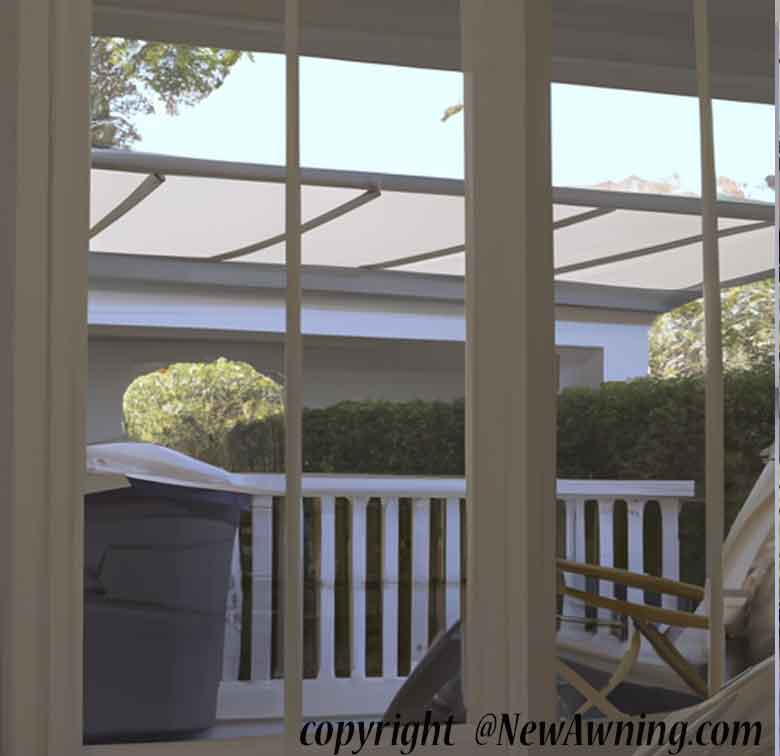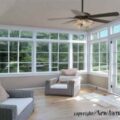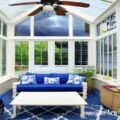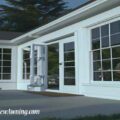Last Updated:July 01, 2025
Maximizing Energy Efficiency in Your Sunroom: (How to make Sunrooms Energy Efficient)
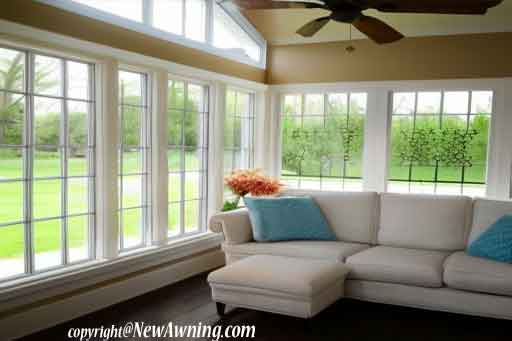
Sunrooms are a popular home addition, providing extra living space and a connection to the outdoors. But with natural light and outdoor exposure comes the challenge of maintaining a comfortable temperature. To make your sunroom a usable living space year-round, it’s important to focus on energy efficiency.
In this blog post, we’ll explore the ways you can reduce heat loss and improve insulation in your sunroom to create a comfortable and energy-efficient living space.
Understanding Heat Loss in Sunrooms
Heat loss is a major concern in sunrooms, as these spaces are often exposed to the elements and lack the insulation found in other parts of the home. To minimize heat loss, it’s important to understand the factors that contribute to it. Poor insulation and air leaks are two of the most common contributors to heat loss in sunrooms.When it comes to sunroom walls, roofs, and flooring, the materials you choose can have a big impact on heat loss. Common materials used for sunroom construction include glass, aluminum, and wood. Glass is an excellent choice for walls and roofing, as it allows plenty of natural light while also providing insulation. Aluminum is a popular choice for framing, as it is lightweight and durable. However, aluminum can be a poor insulator, so it’s important to consider other options to reduce heat loss. Wood is a natural insulator and can be a good choice for flooring, but it can also be prone to warping and rot over time.
Choosing the Right Windows for Energy Efficiency in your Sunroom
One of our biggest tips is to make sure that you use double-pane windows so that there is layered air between the two layers of glass. This will make a huge difference when it comes to how much of the outside temperature invades your home.I’ve been in rooms that had single pane windows, and they quickly chill due to being exposed to the elements, and it just radiants inside. In some cases, I’ve even seen ice or frost form on the inside of the windows.
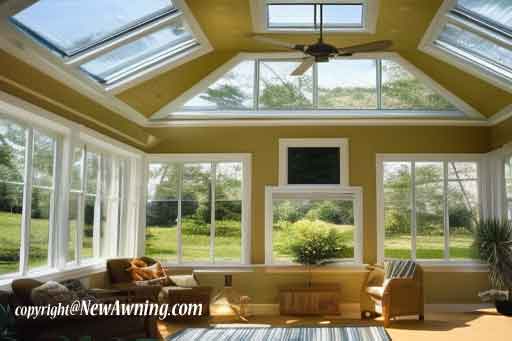
If you inherited a home with single-pane windows and you can’t afford to replace them, I highly recommend using some clear plastic and securely taping it on the inside of the windows. This will create a barrier and focus all the cold air in that location making it harder to disperse.
The second law of Thermodynamics states that areas of warmth will flow to areas of cool to seek balance. By separating the two zones with the layer of plastic, you will have a much easier time keeping your sunroom warm in the winter. This can help some in the summer too; however, if you don’t have AC you may find it more efficient to open a window and place a fan near the windows to increase airflow.
Keeping Your Sunroom Cool in the Summer
One of our more clever DIY tricks to keep our screened-in porch cooler in the summer was to have some dish towels that we hung from the middle of the curtain rods. With a fan blowing through the towels, the water evaporated and created a cooling effect.This is similar to the misters that we have today. It was less efficient and used far, far less water. It’s still a great hack if you’re looking for a way to stay cool in a room with a lot of windows that may not have AC.
This is also a great solution if you have AC, but due to electricity costs choose not to run it.
Improving Insulation in Your Sunroom
Insulation is key to reducing heat loss and improving energy efficiency in sunrooms. There are several types of insulation available for sunrooms, including spray foam, fiberglass, and blown-in cellulose.Spray foam insulation is one of the most effective types of insulation for sunrooms, as it provides a tight seal and helps reduce air leaks. However, it can be expensive to install and may not be suitable for all sunroom styles. If you choose to use spray foam, I highly suggest either hiring a professional or getting DIY tips from someone in that business. Spray foam can be dangerous and possibly deadly if you inhale it. As we are just regular homeowners, we will not be giving any tips or advice on how to install spray foam.
Fiberglass insulation is a more affordable option and is easy to install, but it may not provide as tight a seal as spray foam. Blown-in cellulose is another option, providing good insulation value and easy installation, but it can be messy to work with.
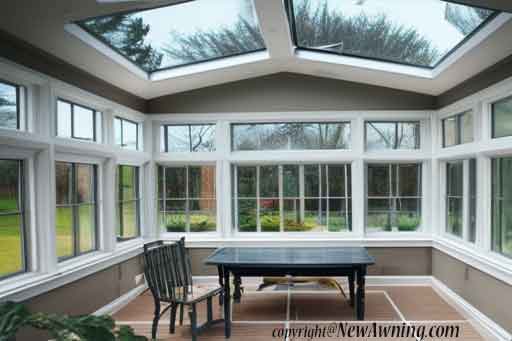
When choosing insulation for your sunroom, consider the specific needs of your space and the materials you’ll be using. Improving insulation can be as simple as adding weather stripping to doors and windows and sealing air leaks, or as complex as installing a new insulation system.
Reducing Heat Gain in Your Sunroom to lower your home energy costs
In addition to reducing heat loss, it’s also important to minimize heat gain in your sunroom. Heat gain occurs when the sunroom becomes too warm due to direct sunlight or other sources of heat. To reduce heat gain, consider shading options, ventilation, and cooling systems.Shading options for sunrooms include curtains, shades, and blinds. These can be used to block direct sunlight and reduce heat gain in space. Ventilation systems, such as fans or air conditioning, can also be used to reduce heat gain by circulating air and removing hot air from the sunroom. Finally, cooling systems, such as air conditioners or portable fans, can be used to keep the sunroom comfortable even on the hottest days.
When choosing methods for reducing heat gain, consider the specific needs of your sunroom and the climate in your area. A well-ventilated
sunroom with shading options and cooling systems can be a comfortable living space even on the warmest days.
Choosing Energy-Efficient Materials for Your Sunroom and window Tinting
The materials you choose for your sunroom can have a big impact on its energy efficiency. To maximize energy efficiency, consider using materials that are designed to reduce heat loss and heat gain.Insulated glass is one of the most energy-efficient materials for sunroom walls and roofing. Double-paned windows with coatings or solar can help reduce heat loss and heat gain, making your sunroom more comfortable and energy-efficient. We’ve written a complete guide to blackout curtains after we installed them on our home. If full solar shades aren’t an option then window tinting with the DIY film can be a great first step. Reflective roofing materials, such as metal or reflective membranes, can also be used to reduce heat gain by reflecting sunlight away from the sunroom.
When choosing materials for your sunroom, look for products with high R-values and low U-factors. The R-value measures a material’s resistance to heat flow, while the U-factor measures the amount of heat that is transferred through a material. The higher the R-value and the lower the U-factor, the more energy-efficient the material will be.
